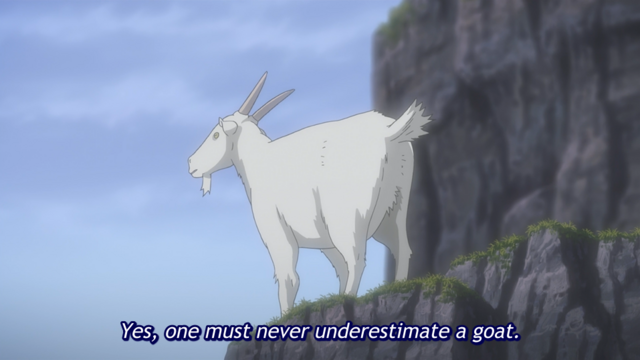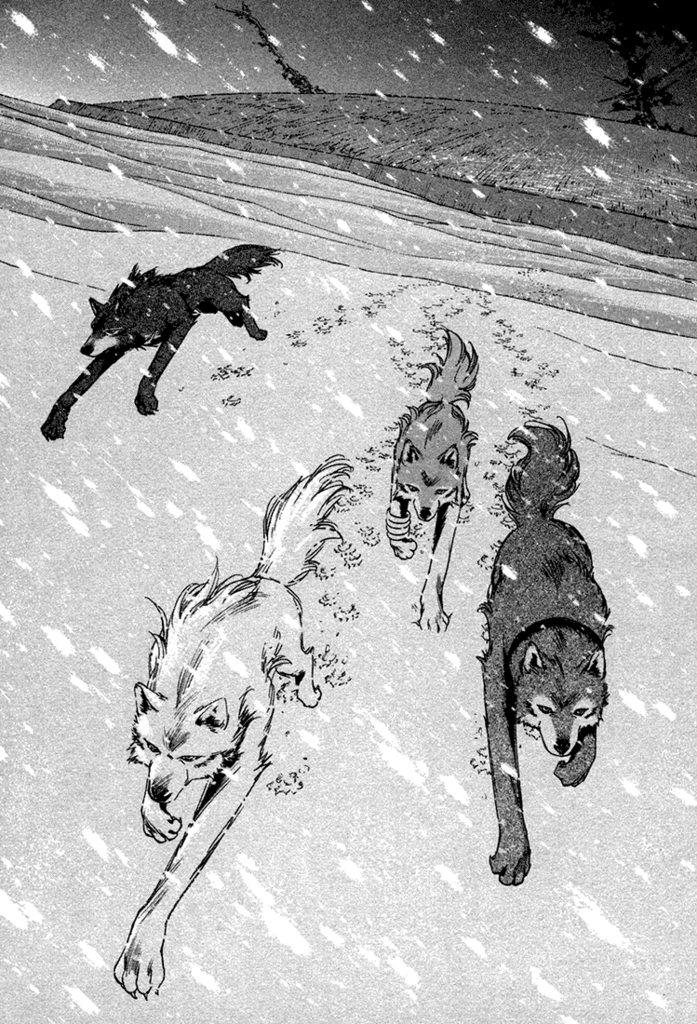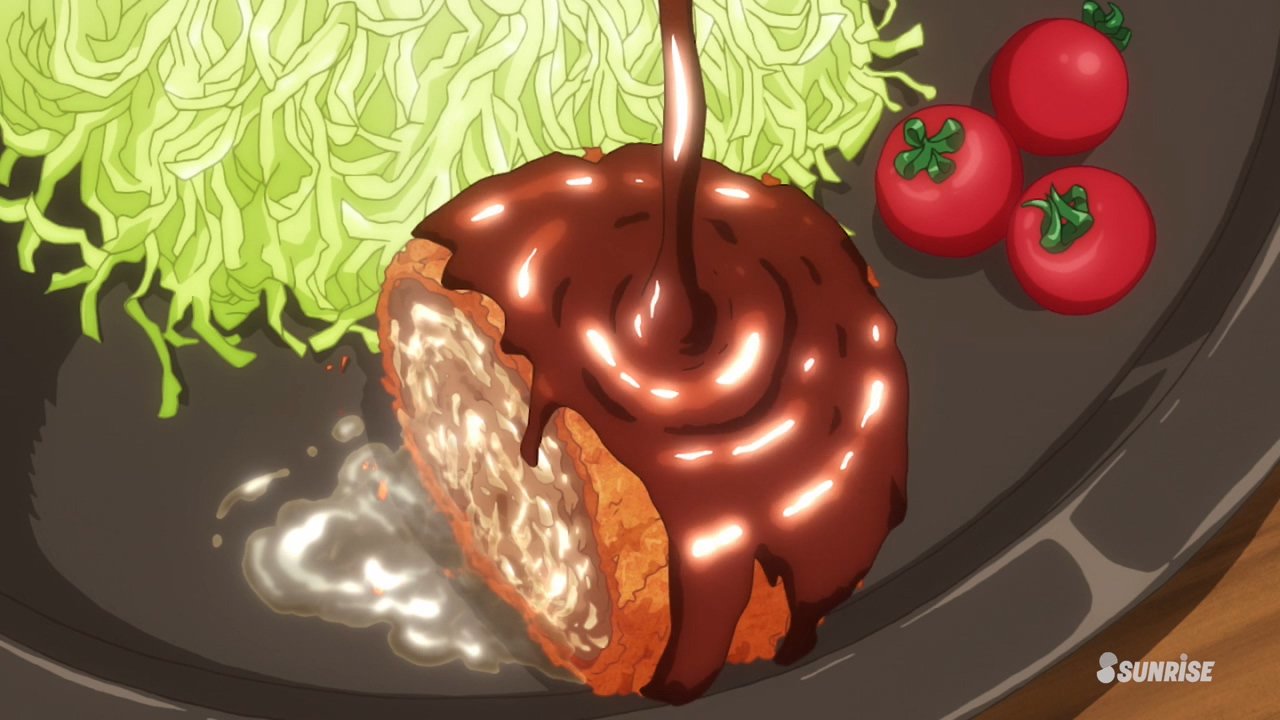NATIONAL FOOD: Tebasaki
NATIONAL FLOWER: Ginko Tree
NATIONAL CHARM: Maneki Neko ("Lucky Cat")
NATIONAL ANIMAL: Black Bear
MAIN IMPORTS: Fresh water, fish, metal(s)
MAIN EXPORTS: Raw Timber, Rice, Funghi, Medicinal Herbs, other building materials
RELIGIOSITYMoku no Kuni is a secular country but holds some regard to Shintoism as its "main" religion. Temples and shinto shrines are set in many places of Moku no Kuni and even in places where no life is found but someone may have carved out lucky charms or shrines from rocky outsets, even in areas generally deemed 'unreachable'
Because of it's wayward landlocked position, it is secular because it finds itself a through road to many other countries. In Law Country, where they have many religion biding fanatics, to the north in Samurai country where chakra is deigned as despicable and not used in the traditional 'ninjutsu' sense.
TOPOGRAPHYBecause of the country being landlocked, it does not have any external sources and so maintains its water by the lakes and spring water found in central locations to Moku no Kuni. Toward each of the borders where their land blends with that of the other (and so mimics some of their climates) there are fewer villages to the borders of the land on account of its lack of freshwater sources. On one hand, makes an invading army difficult to mobilise there, and on the negative makes it both difficult for new areas to be established within the country and makes the existing water sources a target for securing in times of wartime - but makes for deep wells which have all of the water one needs to survive.
Moku no Kuni's topography is primarily timber: wood and more wood. Large landscapes with forests a plenty with deep roots to pluck the water from the reserves of the country. There are many rolling plains in close proximity to water sources as they are used as farmland, with great valleys and lake "peninsulas" that capture water. Cirques are very frequent, rolling along the hills of various elevation, but generally also feature large plateaus that the cirques feature on. Rivers feature heavily in these areas; moving down the cirques and into 'bowl' like structures across the land and forestry.
There aren't any direct mountains in Moku no Kuni. As such, can lack more natural defences than the other villages do like Kaminari no Kuni and Tsuchi no Kuni offer, neither do they stop potential armies from invading by particularly hostile environments like the harsh winters of Tetsu no Kuni and Yuki no Kuni. While they lack natural defences, the areas they do have are extremely well fortified in place of natural defences by everything that was built for individuals to cross have been engineered to disable use (bridges with 'intentional' flaws that can be utilised to destroy them quickly) and created with material as to be easily replaceable and areas of strong design like features (slopes, walkways designed to be easy for people to be picked off, thin enough to not allow traditional weaponry to be swung properly like Katanas)
ENDEMISMMoku no Kuni's endemism is a variety of hardy animals and more traditional mammal, warm blooded creatures. They larger and more dangerous types of animals are deer, cougars, bears and mountain lions. They have predator animals like eagles, hawks, cats and rabbits. They host nocturnal animals like badgers, bats, skunks and small mammals. But, primarily mammals. Less frequently and more found in the higher regions of the land (but not as high as that of a mountain) can be goats, sheep, cows and other farmland mammals which in turn produces wolves, oxen and more mountain lions.
That being said, the primary focus of wildlife is not co-harmony, and few species work in tandem with one another and instead are competing for some of the fewer natural resources as well as territory among the few water sources in the country. This produces a competing environment which can make for more treacherous journeys across the land of Moku no Kuni. Moku no Kuni in the winter does not produce new types of animals, nor any migrating species'.
Military Information
CAPITAL: Kosuigakure no Sato (Village Hidden in the Lake)
OFFICIAL LANGUAGE: Nihongo
GOVERNMENT: Absolute Plutocratic Monarchy
CURRENT DAIMYO: --
LEADER TITLE: Moku Lord/Lady [Lord/Lady of the Wood]
ECONOMIC RATING: 3/10
CRIME: Moderate-to-high, trending upwards
ALLIANCES: Konohagakure no Sato
NEUTRALITY: Tetsu no Kuni
ENEMIES: --
HEADBAND:  LARGEST CITY:
LARGEST CITY: Kosuigakure no Sato
(Village Hidden in the Lake) POPULATION: 413,665
MILITARY POPULATION: 4,544
MAP: linkBORDERS:North: Tetsu no Kuni
East: Tsuchi no Kuni, Bird Country
South: Bird Country, Vegetable Country
West: Law Country
TRAVELING RESTRICTIONS:Local Ninja: See Hidden VillageWandering Ninja:Foreign Ninja: Provided Foreign Ninja are capable of getting to the land and then its village, they are fingerprinted, have their chakra signature recorded and are sent off on their way with some relative restriction to the places they may visit. Trespassing and breaking the rules is death. No survivors.
Citizens: Citizens enjoy relative freedom as long as they can afford to do so. They are not regulated to the same respect that the shinobi are.
history
Moku no Kuni has been established for hundreds of years but unlike the major and minor countries, Moku no Kuni did not have a formal military until +3SD.
In the warring clan era, while Moku no Kuni had been established as a place of prominence on account of it's ability to produce raw exports such as fertile soil and arable farmland as well as hardy wood (and lots of it) frequently made it a battlefield. The desire to own the land had made it a competing area among lands. In the decades that followed, Moku no Kuni had become an onerous battlefield, as such for a long period vast quantities of the land had been rendered inert by the use of Shinobi. Culturally, this was significant because the hugest push back in the development of Kosuigakure no sato was because of the impact Shinobi and Kunoichi had on the natural landscape. So, the warring clans moved on to other areas, having left the landscape of Moku no Kuni as a destructive and chakra-ridden wasteland.
The Nobunaga clan was one of the warring victors of the land: with consistent and use of samurai skills of Kenjutsu and general lack of chakra made them popular among the people and they were able to unite the borders between lands to establish Moku no Kuni as an existing country with a Daimyo.
Unlike other countries, the existence and emergence of the Daimyo actually came after the establishment of the country in part because of the highly territorial nature of the clans simply protecting their borders that established the shape of the country. They would be also having intra-border strife between clans as they began to branch off into factions. At around -150SD when other villages were going through the same time, Moku no Kuni was just beginning to have their strifes that caused the villages to emerge. Currently, there was a crisis in the land that their lakes were decimated: all of the natural wildlife was only able to grow on part due to the deep roots, where their water was more abundant.
This time between -150SD and -130SD was marked by a rapid decline of militaristic in fighting because of the decimated landscape. But, it was beginning to heal and with it, they were being pushed more in land because of the lack of availability of water, and because of fighting from other lands. They were not as established or synonymous with the purposes that other villages did, that incited them to work together under a unified banner. This time was mostly a time of simply trying to survive against the land itself: trying to turn the less arable lands into something that could be used for farmland.
The Nobunaga clan at this stage was beginning to annex the intra-borders of the other clans inside Moku no Kuni, enticing people with money. This was the formal moment that they began to become the 'Damiyo' of the land. They key being they were ordering other people around, ensuring a swift dissemination of the food and beginning to operate trade inside their land: trading outside of the country would not become more widespread until after -85SD and the formation of the primary ninja villages. Even other hospitable lands were starting to get rejuvinated, and eighty years of lack of true battle saw their land turn to the beautiful green that it once was than the ashen, burnt branch and open plains. What were once razed landscapes had become rolling fertile hills of grass.
The far-reaching effect was that the chakra had saturated its landscape rejuvenated the wildlife and flora once again when the majority of the clans had left the area. The surrounding land began to produce interesting results, which later became one of the primary exports of Moku no Kuni when they had formally formed a working military.
What they hadn't anticipated is that the 150 - 200 years previous, the waste created by Shinobi had saturated the land with such chakra that they had created a different type of plant: the wood, it seemed, learned how to make use of the chakra as a source of life. They was able to take this material and find a use for it as a tool of weaponry.
To that end, the reigning Nobunaga Daimyo set about training a hundred blacksmiths to learn how to work with the material and it was that choice that made Moku no Kuni rich again as they had discovered the versatile use of
Tochi no chi mokuzai [Land's Blood Timber] this material it seemed had the ability to translate into useful effects when elemental chakra was introduced to it.
Because of that find - the land was finally annexed to become a full nation, in -68SD. In part because of the Nobunaga clan, and in part because of trying to keep people from their own lands and using it as a battlefield as it had been so a hundred years prior. This choice was what dominated the enemies of the Nobunaga clan. So each time a war broke out, the Nobunaga clan fashioned together the Shinobi clans (allowing them their own home and land as vassals; and in turn they would provide taxation) to mobilize at the borders to protect their land from being used as they once had before.
In -43SD at the start of the Second Shinobi war, the Nobunaga clan was politically usurped - their leaders murdered and replaced by a much more hungry clan, both rich in their own right but also more warlike. The Oda clan instead was the new leader, and with that internal strife began to take place again and seemingly only doomed to repeat the history of last. To this day, they had not been able to establish themselves as a Ninja village because of the push back to learn Ninjutsu other off branches of it. It was a necessary development that required decades of weaning people on to- but eventually, the ninja of the land began to take on board the vast and overwhelming power of Ninjutsu and turn it into their own type of learning. Little academies, informally created inside clan territories to teach people it, if only to defend themselves.
Crime was on the rise due to the trades and technology emerging through war time that ravished through the land. It seemed everybody and their neighbours was dealing with a scourge. It became clear that there was only one thing they should or could do to maintain their position and protect their lands: grow into a Shinobi village. The Daimyo began to travelling the lands, getting and gathering what money they could; taxation on the clans that resided there, as well as banding them together formally under one roof and a village to be built properly where they had themselves settled, later dubbed 'Kosuigakure no Sato' was formally just a lakeside village, until the heir apparent Daimyo Oda Ukiyo had her way with it.
But they were unsuccessful. Oda Ukiyo, the reigning Daimyo and a warrior in her own right was unable to achieve that and she passed before her dream could ever be recognised. The task was then placed by hereditary right into that of Oda Momo. Momo was just a teenager and not as skilled as his mother: but try he did. Where he lacked in combat right, he had people that believed in his mother's cause.
A significant barrier between reaching this dream was the land's history with Shinobi being tumultuous at best; they had never desired to operate under Shinobi rule but it was his word. So, the only thing -- could do was pour money at it. Money and influence.
The ruling Daimyo put in a vast majority of their money into bolstering the economy surrounding the development of Kosuigakure no Sato: but when the money ran out and they still hadn't produced any true Shinobi yet, was a dire problem. The nation began to suffer, but at that time: shinobi were finally being trained under one barrier. They did eventually break through and as a result were able to build a shinobi presence, but are still recuperating from the fiscal requirement in setting up a centre of shinobi-ism in Moku no Kuni.
The time it took was that by the time the lakeside village had been created, the infrastructure in place to support a formal economy, other nations were catching wind of it - and sent to destroy it so that they would become reliant on other nations again. Fearing the worst and in their fourties at the time, Momo who had grown to become a fine ruler would place their heritage aside and promise that they would not form a new village. In -5SD, the "dream" was abandoned, Momo had passed on and the next best person took the slot.
But they had no intention of keeping the promise. Moving full force toward a new Shinobi village was all they could aim for, and eight years later - in +3SD, the village was finally formed under the guise of darkness. Headbands were created, they had finally created a batch of shinobi under their unified teachings, supplemented by the teachers of their time - so that they could begin a show of force, they were not a nation that could be held down. Eighty years late, certainly: but not out of the running.
But through this entire time, the Daimyo and head of state that was, the new Lord of the land were under disagreement. It seemed almost fateful, that similar to that of Kirigakure no Sato - they were merged together as one by an assassination and political usurping which seemed all too common of its time. They had poured so much money, the once "doing well" nation was currently facing a recession: and that's where their story starts.
notable places
 Village Hidden on the Lake
Village Hidden on the Lake
At the very top of the largest outcrop is the Lord/Lady's manor; offering a three sixty view of the world around it in the form of a shinto shrine, a room with four walls which are usually kept open.
Ginko Forest
The Ginko forest is a beautiful forest that for three quarters of the year can be categorised as a luscious and fertile green forest spanning around a hundred miles - seeming to span endlessly. It is one of the main features of Moku no Kuni. There are numerous paths throughout the country that traverses through these forests, and can be a home to micro-biomes inside the forest as the landscape changes. However, during fall and the start of winter the world turns gold: Ginko is a type of tree that turns its leaves gold when they turn to drop, and it turns the country into a land of yellow and gold.
Culturally this is known as 'Sakin Fūka Shita' [Gold Dust Weathering] a time of luck and prosperity for the nation as the cycle of forestry begins again, where folks who take to it as a role identify the dying trees and chop them down before they can be rendered useless, so that they can be valuable once again. Zelkova (Japanese Elm)
Zelkova is set inside a valley and not to be confused with a mountain: a large, steep entry to the north or the south, through ravines in the earth and where water carved out a path this village is concerned, situated around a central water source and a manmade dam. Shinto-inspired temple styled housing runs along a river, and the village is very 'rectangular' in style, situated along a river. The river is split in three ways at its source in the north: so that it can run between the rows of housing. It is particularly hidden hence their survival.
Culturally, festivals take place during the year here to the river gods for prosperity and health. It's main trade is hemp and thriving funghi deposits.
Bonsai (Potted Tree)
Bonsai is the secondary location to Kosuigakure no Sato. Centered on a large forest plain-land and a single source of water contained by a memorial building in white, separates a civilian district from a Shinobi district with residential on one side and the other arts on the other side (blacksmiths, etc) with a colosseum in the middle of that district. The colosseeum is known for shinobi fighting, but also theatre; where plays are performed in the round and on a central stage.
Opposite the residential and militaristic district is a lake, a religious shrine and parallel to the lake is a more specific militaristic sector that only Shinobi can enter: a barracks for outposted ninja, a mini-council in charge of the prefecture's affairs and the other governmental building in charge of day to day matters. Itadori (Japanese Knotweed)
Itadori is a single building: a known shinto-religious focused town that is comprised of one huge building, its namesake is to the fact that it's just a long continuous building that incorporates all of the elements of a traditional town, interweaving between multi-levels, religious buildings and businesses with residential areas in one place.
For that purpose and its position as one of the primary towns to the east and closer to the other nations, Itadori has a large military presence that focuses on allowing operations and missions to run separately from the state and daimyo there: allowing it to flourish as its own social and economic ecosystem under the remit of the ruler. Kaede (Japanese Maple)
Kaede is a fortress to the north and separates Tetsu no Kuni from Moku no Kuni. It is a non-civilian land, and so the area surrounding it is completely empty and devoid of traditional foiliage to hide behind, so any attacks must be done directly: the land is still not entirely regenerated from battles that took place a hundred years prior and so is a very sparse wasteland that makes it hard to live. Inside the fortress is a dedicated area for greenhouse growing, since its land is more cold than not because of it's proximity to Tetsu no Kuni.
Sakura (Cherry Blossom)
Sakura is a flat land with a simple wall in a square that separates the inside world from the out. It is mostly known for the sakura blossoms that are in the area, and make for a wonderful sight for tourists. It is characteristic of their spirit - and tending to the trees is one of the most revered careers in Moku no Kuni, that they even have their own title of 'Cherī Pāru' [Cherry Pearl] it is the source of the primary herbicide, and herbal medicines that are made inside Moku no Kuni.
When not in the 'Sakura Season' it can be good for it's Sake, created as a byproduct of the inferior grain that isn't used for eating, and the byproduct of the remainder of grain or byproduct from creating alcoholic beverages is then used as cattle feed.
Sugi (Japanese Cedar)
Sugi is a place that is located inside the Ginko Forest. Obviously, surrounded by Ginko trees, and many Torii gates that are adorned along the paths. Its buildings are spread out over the land and on the single path. Entire residential districts, the shinobi centre, or religious fronts: all based off one road. They do not branch from the main path, and are very characteristic of the Torii gates.
It is known that this is the main path for any religious ceremony or journey and is commonly used as an area for events, especially of the religious kind when they come around because of Moku no Kuni's relationship to its forests. 
























































